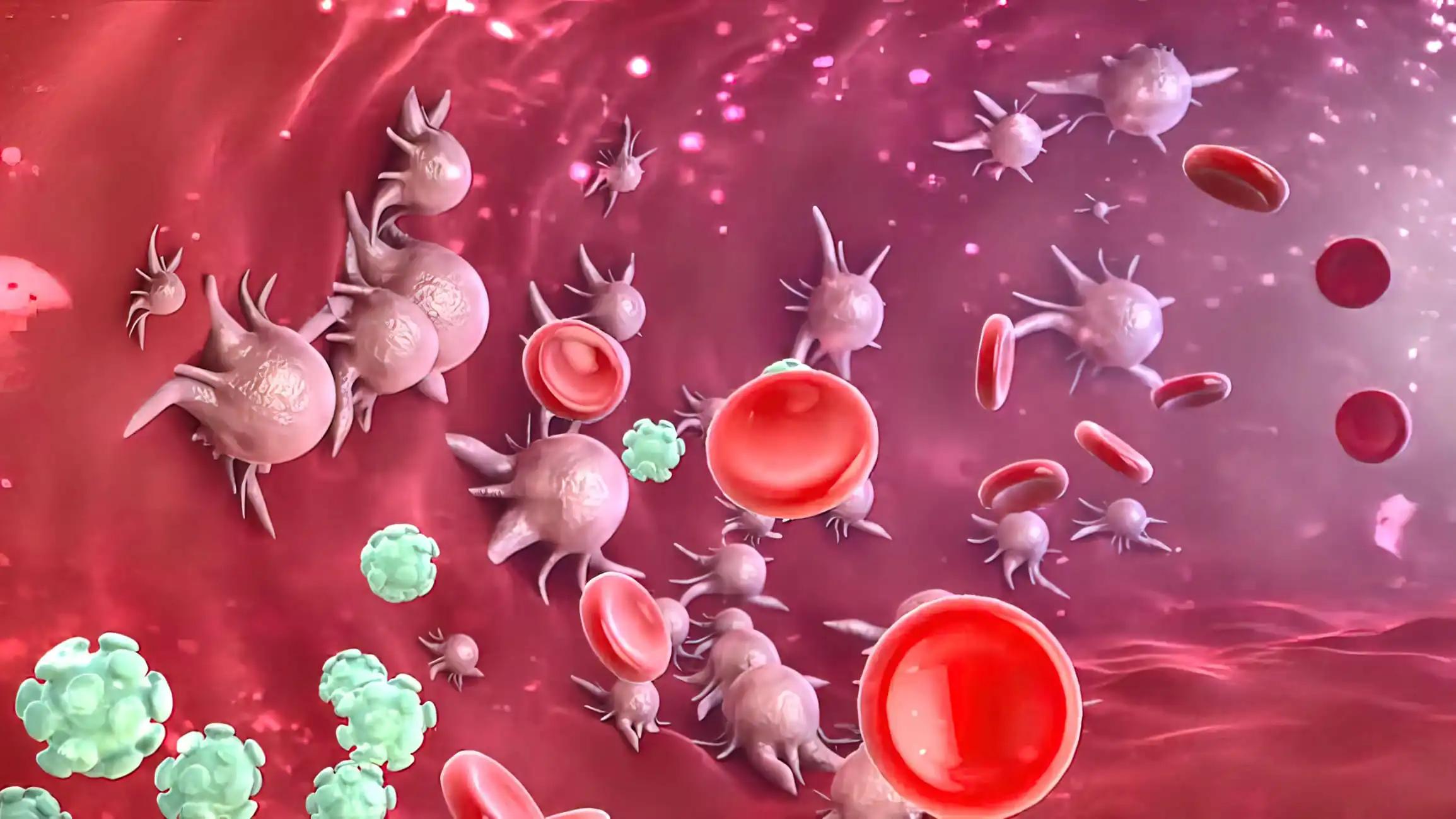KEY TAKEAWAYS
- The trial aimed to develop dynamic NRM monitoring for allo-HSCT to enhance individualized therapy by assessing prognostic biomarkers continuously.
- The results showed a dynamic NRM prediction model, identifying high-risk individuals and improving personalized treatment.
While prognostic biomarkers are commonly employed to evaluate non-relapse mortality (NRM) in patients undergoing allogeneic hematopoietic stem-cell transplantation (allo-HSCT), existing models rely on biomarker concentrations at fixed time points. This static approach precludes dynamic NRM risk monitoring, thus restricting their effectiveness in guiding personalized therapy.
Jingjing Yang and the team aimed to enhance personalized therapy guidance by developing a dynamic NRM monitoring model for patients with allo-HSCT.
The study involved 621 patients undergoing allo-HSCT at 7 Chinese transplant centers from August 2018 to February 2022. Biomarker concentrations (ST2, REG3α, TNFR1, IL6, and IL8) were systematically assessed post-HSCT (day 7/14/28/60/90).
Patients with acute GVHD underwent weekly biomarker monitoring during the initial treatment month. Employing machine learning, a dynamic monitoring model was crafted to predict 6-month NRM post-allo-HSCT, subsequently validated across an independent multicenter cohort.
The results revealed that the model exhibited a high area under the curve (AUC) for 6-month NRM prediction across the training set (0.86), testing set (0.86), and validation set (0.94). According to model scores, 11.66% (54/463) of patients were categorized as high-risk (HR), 22.03% (102/463) as moderate-risk (MR), and 66.31% (307/463) as low-risk (LR). Similar distributions were observed in the validation cohort, with 18.35% classified as HR, 24.68% as MR, and 66.31% as LR.
Notably, high-risk patients identified by the model exhibited significantly higher 6-month NRM rates compared to MR and LR groups (34.75% vs. 9.98% vs. 1.30%, respectively; P< 0.001), a trend consistent in the validation cohort (41.38% vs. 2.56% vs. 0.00%, respectively; P< 0.001).
Multivariate analysis revealed model score (P< 0.0001) and acute GVHD grade (P=0.0014) as significant predictors of NRM. Throughout dynamic monitoring, the model consistently identified patients at high risk of NRM across various post-HSCT time points. Additionally, the model effectively stratified patients with acute GVHD receiving treatment into groups with distinct NRM outcomes.
The study concluded that developing a dynamical monitoring model for predicting NRM in patients with post-allo-HSCT shows promise in identifying high-risk individuals. This innovation holds the potential to enhance individualized treatment approaches.
The trial was sponsored by the Chinese PLA General Hospital.
Source: https://ebmt2024.abstractserver.com/program/#/details/presentations/1311
Clinical Trial: https://clinicaltrials.gov/study/NCT04284904
Yang J, Zhang X, Dou L, et al. (2024) ” A PROGNOSTIC MODEL FOR NON-RELAPSE MORTALITY RISK BASED ON MACHINE LEARNING IN PATIENTS UNDERGOING ALLOGENEIC HEMATOPOIETIC STEM-CELL TRANSPLANTATION.” Presented at EBMT 2024. (B059)



